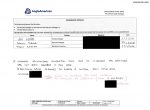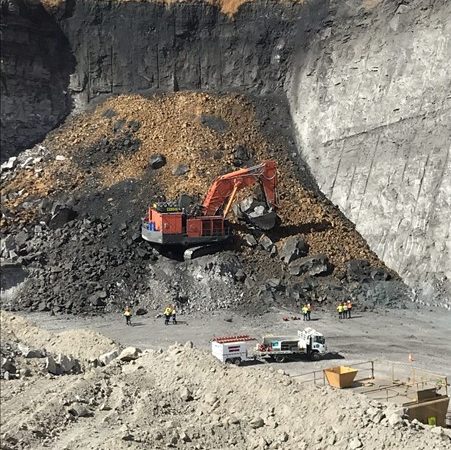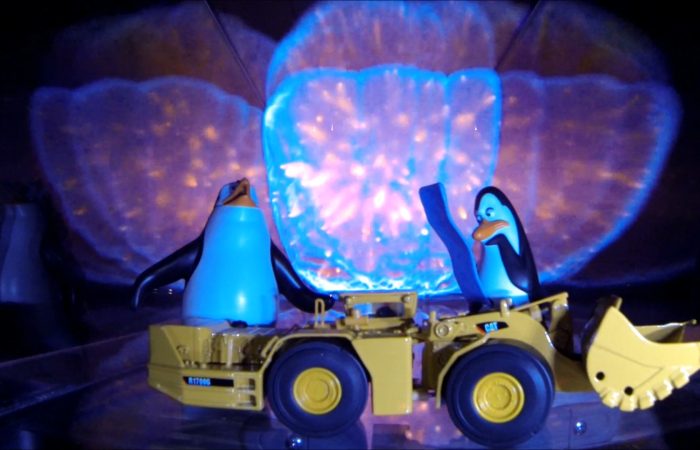No Spontaneous Combustion Risk Assessment for Grosvenor LW 104 Second Workings Notice to Mines Inspectors. An Outright Breach of Qld Coal Regulations? Why No Recommendation from Grosvenor Inquiry for Investigation into possible Prosecution for Non-Compliance?
GROSVENOR INQUIRY EXCERPTS (FINDINGS)
69. Careful analysis of the gas data reveals the presence of a number of subtle indicators of a small but intense heating in the goaf.
77. In the circumstances, the Board concludes that a spontaneous combustion-initiated methane explosion was the probable cause of the first pressure wave.
90 In the Board’s view, spontaneous combustion was the probable cause of the serious accident. It was also the cause of an ignition that occurred at Grosvenor on 8 June 2020.
The occurrence of these events, despite the use of conventional monitoring systems that did not clearly detect them, is of major concern.
Ventilation Consultant Andrew Self was asked by Counsel Assisting Hunter whether he would start longwall production without doing a risk assessment for spontaneous combustion associated with gas drainage – that is, post-drainage?
“NO” was the reply.
Anglo Grosvenor Management not doing the spontaneous combustion risk assessment appears to be a straight non-compliance with the Coal Mining Regulations.
R 317 Risk assessment
- The underground mine manager for an underground mine must ensure a risk assessment is carried out under this section to decide a safe method of extraction for second workings at the mine before the second workings start.
- The risk assessment must have regard to at least the following matters
d) the anticipated gas make
g) the proposed methods for the following—
-
- strata control and support;
- ventilation;
- controlling spontaneous combustion
This seems to have escaped the attention of the Grosvenor Inquiry entirely.
The Inquiry states as a Finding that m) Mining on LW 104 should not have commenced without that spontaneous combustion risk assessment being conducted;
Why isn’t there a mention about the Legality or Illegality of not doing the Risk Assessment as Required under the Regulations?
Why nothing about about this being subject to investigation and possible prosecution for Non-Compliance?
The Inquiry also state that the Inspectors were not told that no risk assessment for spontaneous combustion had occurred or would before May 2020.
Grosvenor’s history on previous longwalls was such as to require close attention by the Inspectorate to the mine’s gas management systems and practices at LW 104. This did not occur.
The Inspectorate should have been more proactive.
It is only Recommendation 5 that addresses the Mines Inspectorate (RSHQ) risk management and oversight practices to ensure an acceptable level of risk to Mineworkers
Recommendation 5
Resources Safety & Health Queensland (RSHQ) reviews its risk profiling and response practices with a view to ensuring that it operates as a proactive regulator.
REALLY, THAT IS THE BEST THEY COULD COME UP WITH?
This is the same RSHQ and Inspectorate that said this in a Mine Record from 9th May 2018, and then did SWEET F.A.
We explained that the mine had reported 32 HPI’s since LW 102 had commenced production in January 2018. This represented 60% of all HPI’s in Queensland associated with Methane greater than 2.5% in Longwall TG
It was also acknowledged that continued HPI’s with Methane greater than 2.5% was not satisfactory and the mine must ensure that such HPl’s are minimised, and preferably eliminated going forward.
To let CEO STONE and the SAME GROUP OF INSPECTORS to REVIEW how RSHQ conducts its RISK PROFILING and RESPONSE PRACTICES with a VIEW to ensure it operates as a PROACTIVE REGULATOR.
NOTHING WILL HAPPEN AND NOTHING WILL CHANGE.
Just like the soon to expire time limit with North Goonyella, the Mines Inspectorate (RSHQ) will just say nothing and hope everyone forgets.
There is now less than 3 weeks till the time frames expire!
Still nothing but silence.
The Mines Inspectorate (RSHQ) in Queensland should hang its head in shame.
Why the cult of secrecy and everything done at the last minute or not at all?
DOES RSHQ have something it wants to hide?
https://www.couriermail.com.au/news/queensland/mackay/inspectorate-wraps-up-north-goonyella-mine-fire-probe/news-story/5d9e96a545c7ab98cce7cc8de66486f3
GROSVENOR INQUIRY EXCERPTS
Finding 30
The Board makes the following findings in relation to planning for gas management on longwall 104 (LW 104):
m) Mining on LW 104 should not have commenced without that spontaneous combustion risk assessment being conducted;
q) Although there was no obligation to do so, the Inspectorate was not advised at any time that no risk assessment for spontaneous combustion associated with increased goaf drainage at LW 104 had been conducted, nor that none would be conducted until the end of May 2020, well after production commenced.
Finding 60
Grosvenor’s history on previous longwalls was such as to require close attention by the Inspectorate to the mine’s gas management systems and practices at LW 104. This did not occur, with the result that there was a lost opportunity to discover that the mine’s production rate exceeded the capacity of its goaf drainage system.
The Inspectorate should have been more proactive.
Executive Summary Grosvenor Inquiry Report
69. Careful analysis of the gas data reveals the presence of a number of subtle indicators of a small but intense heating in the goaf.
90 In the Board’s view, spontaneous combustion was the probable cause of the serious accident. It was also the cause of an ignition that occurred at Grosvenor on 8 June 2020.
The occurrence of these events, despite the use of conventional monitoring systems that did not clearly detect them, is of major concern.
https://coalminesinquiry.qld.gov.au/wp-content/uploads/2021/06/Queensland-Coal-Mining-Board-of-Inquiry-Part-II-Report.pdf
SCOPE WRAC proposed Goaf Drainage for Grosvenor’s LW104
The scope of the WRAC was to complete a broad brush risk assessment on the proposed Goaf Drainage for Grosvenor’s LW104. The risk assessment provided an opportunity to identify any potential issues/risks that may result from the proposed design/strategy for LW104 goaf drainage system and to develop suitable controls to minimise the potential impacts. The scope included reviewing some of the following key financial and compliance risks/issues;

Increased spontaneous combustion risk due to increased gas drainage has not been assessed in this WRAC. Additional WRAC required to assess and control spon com risk.
Executive Summary Grosvenor Inquiry Report
90 In the Board’s view, spontaneous combustion was the probable cause of the serious accident. It was also the cause of an ignition that occurred at Grosvenor on 8 June 2020.
The occurrence of these events, despite the use of conventional monitoring systems that did not clearly detect them, is of major concern.
https://coalminesinquiry.qld.gov.au/wp-content/uploads/2021/06/Queensland-Coal-Mining-Board-of-Inquiry-Part-II-Report.pdf
69. Careful analysis of the gas data reveals the presence of a number of subtle indicators of a small but intense heating in the goaf.
70. Over the period that the mine was in operation, the gas chromatograph regularly detected traces (sub-1 ppm) of ethylene in locations that included goaf seals, the goaf stream and goaf well
76. The Board concludes that on the afternoon of 6 May 2020, there was an explosible mixture of methane and air within 55 metres of the shields, on the tailgate side of the goaf, which is also where it is likely that spontaneous combustion activity was occurring.
77. In the circumstances, the Board concludes that a spontaneous combustion-initiated methane explosion was the probable cause of the first pressure wave.
Finding 30
The Board makes the following findings in relation to planning for gas management on longwall 104 (LW 104):
m) Mining on LW 104 should not have commenced without that spontaneous combustion risk assessment being conducted;
q) Although there was no obligation to do so, the Inspectorate was not advised at any time that no risk assessment for spontaneous combustion associated with increased goaf drainage at LW 104 had been conducted, nor that none would be conducted until the end of May 2020, well after production commenced.
ANDREW SELF (TRA.500.021.0045)
Counsel Assisting Hunter Q. Did you know that at Grosvenor the risk assessment for the goaf drainage system specifically did not address the risk of spontaneous combustion as a result of increased goaf drainage?
A. I’m not aware of that.
Q Perhaps if I could ask, Mr Operator, if we could bring up AGM.002.001.0937. This is the risk analysis for goaf drainage. Could we go to page 17 of that document, please, Mr Operator. Do you see endorsed on that document:
Increased spontaneous combustion risk due to increased gas drainage has not been assessed in this WRAC.
Additional WRAC required to assess and control spon com risk.
A. Yes.
Q Do you see endorsed on that document:
Increased spontaneous combustion risk due to increased gas drainage has not been assessed in this WRAC. Additional WRAC required to assess and control spon com risk.
A. Yes.
Q Would you embark upon production on a longwall, if you were operating a mine, without doing a risk assessment for spontaneous combustion associated with gas drainage – that is, post-drainage?
A No.
The strategy to manage C heading as part of the Tailgate 104 return would have been supported by extensive documentation including a LW104 specific risk assessment.
This is to comply with
R 317 Risk assessment
- The underground mine manager for an underground mine must ensure a risk assessment is carried out under this section to decide a safe method of extraction for second workings at the mine before the second workings start.
- The risk assessment must have regard to at least the following matters
d) the anticipated gas make
g) the proposed methods for the following—
-
- strata control and support;
- ventilation;
- controlling spontaneous combustion
Regulation 318
2) The procedure must be based on the results of the risk assessment mentioned in section 317, and
3) The mine must have a separate procedure for each panel in the mine.
320 Notices to inspector
- Before second workings are started at an underground mine, the site senior executive for the mine must give an inspector notice about the proposed second workings.
- Before the mine’s standard operating procedure for second workings is significantly changed, the site senior executive must give an inspector a copy of—
a) the report on the risk assessment carried out under section 319(3)(a) for the change; and
b) the proposed standard operating procedure.

